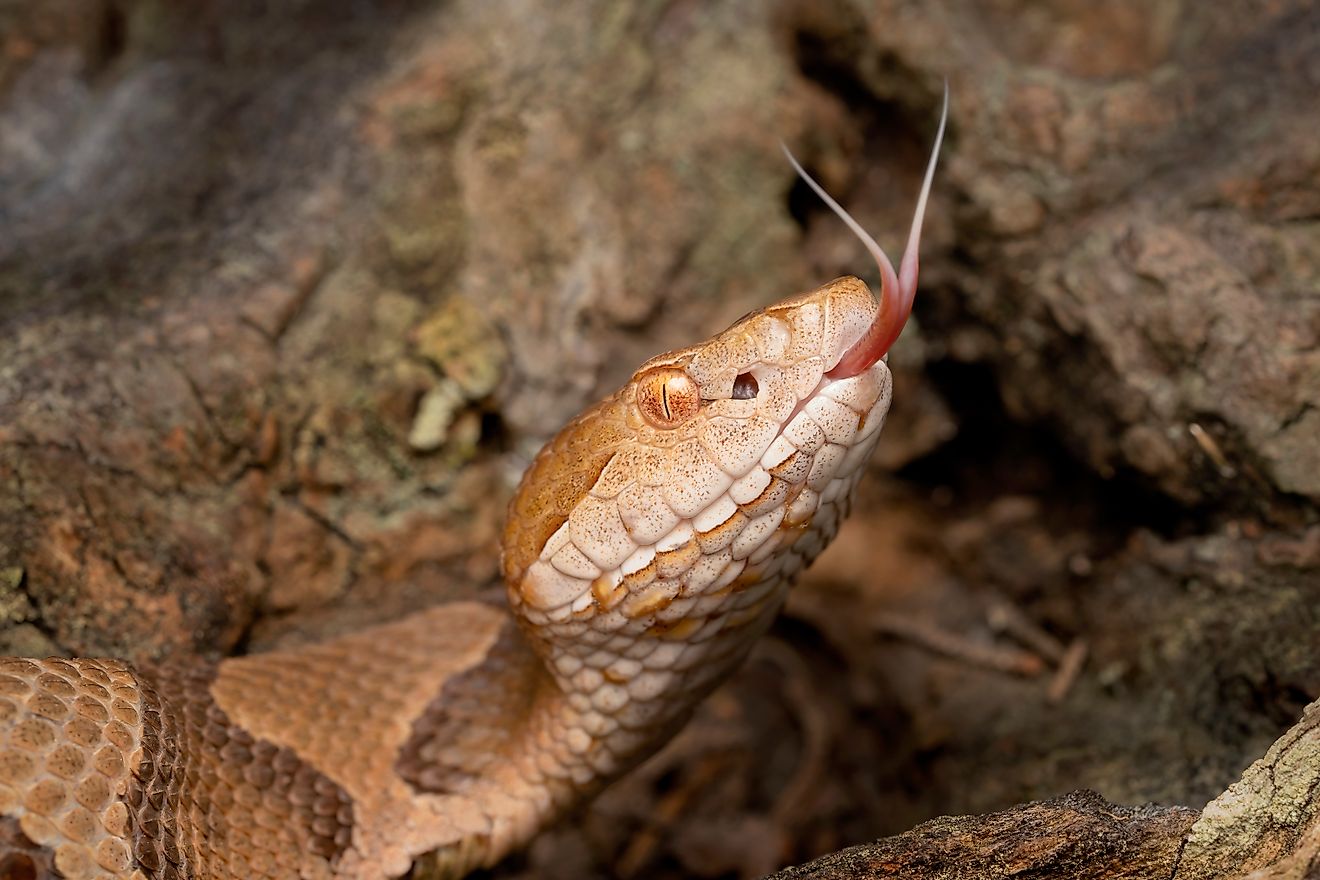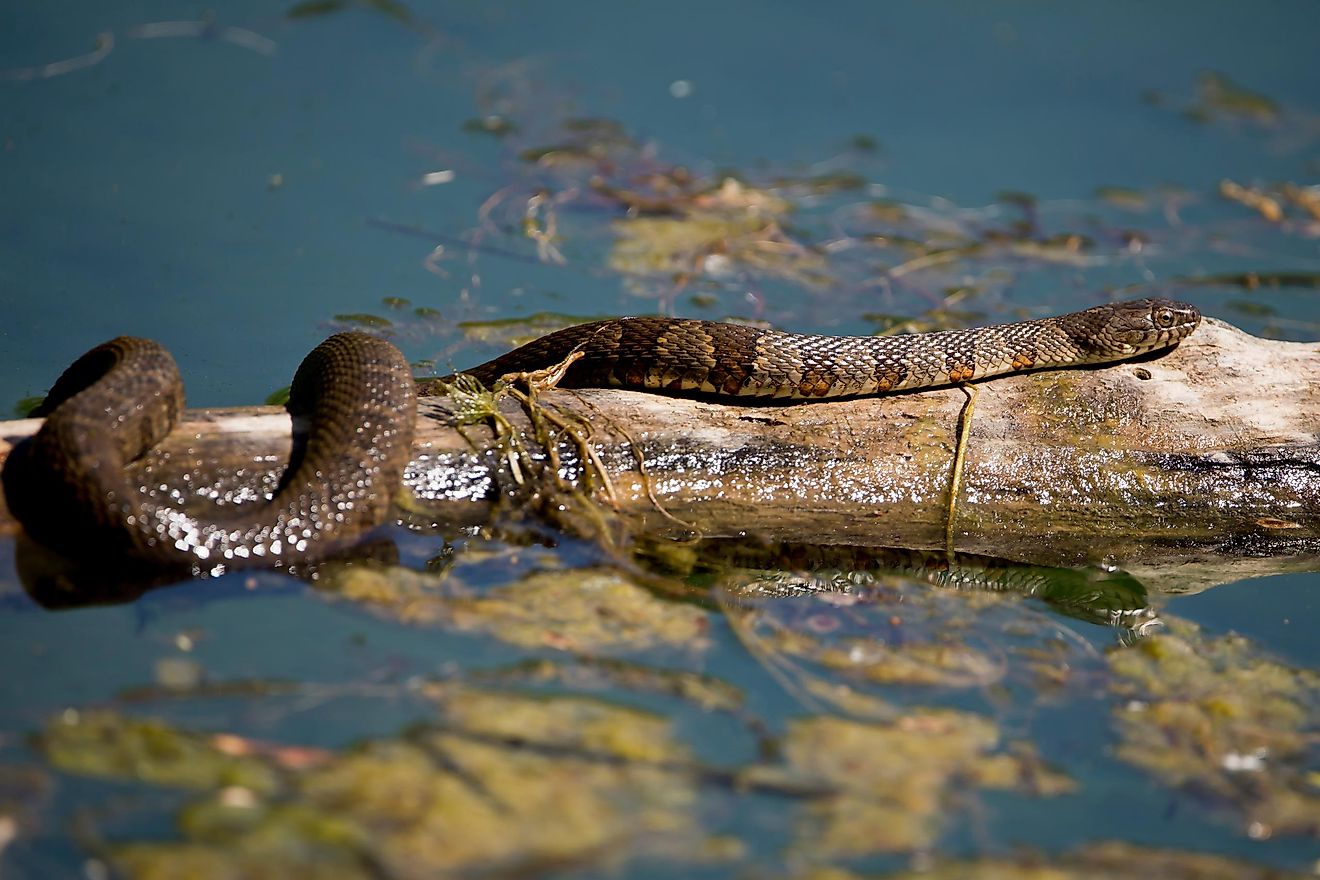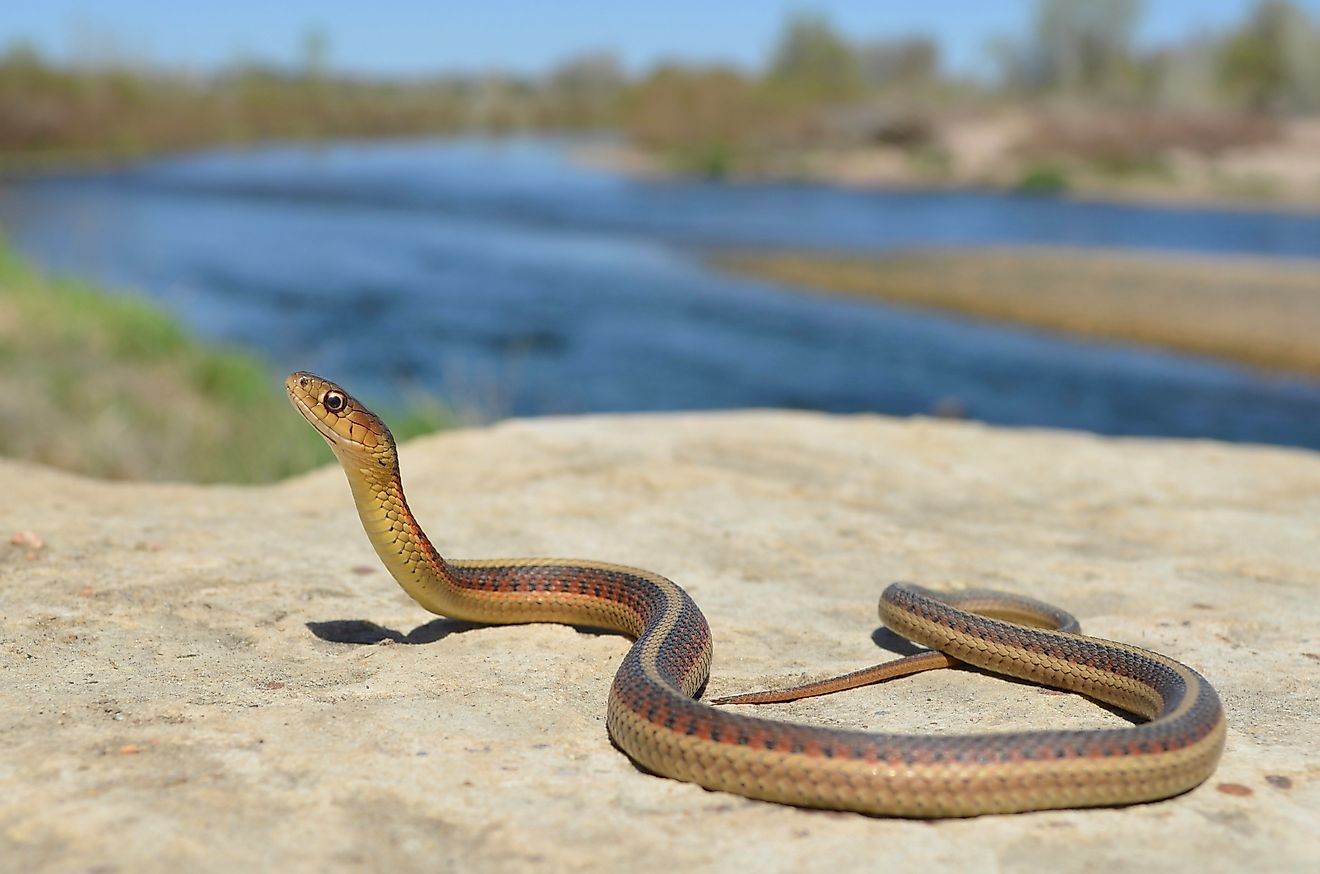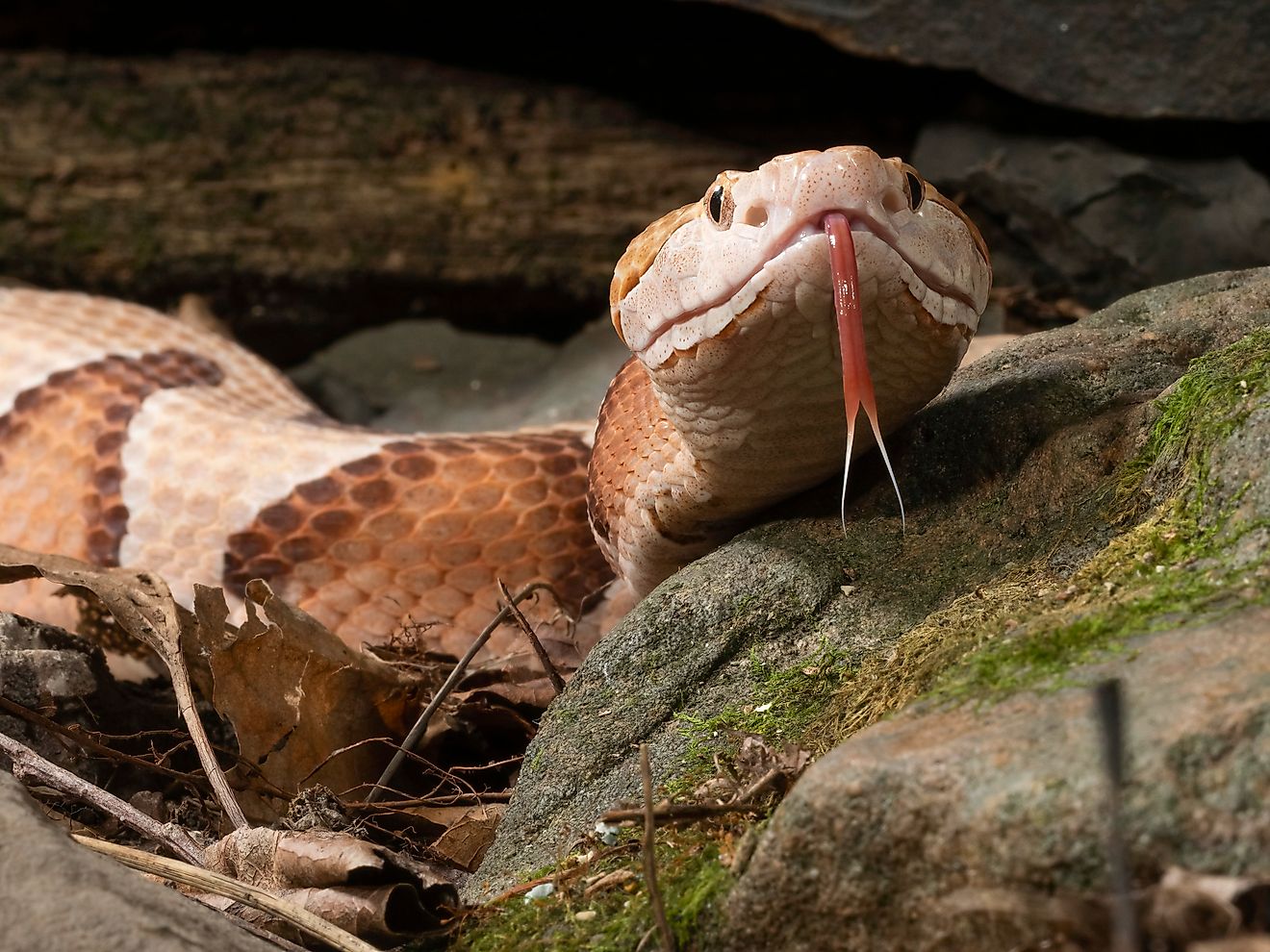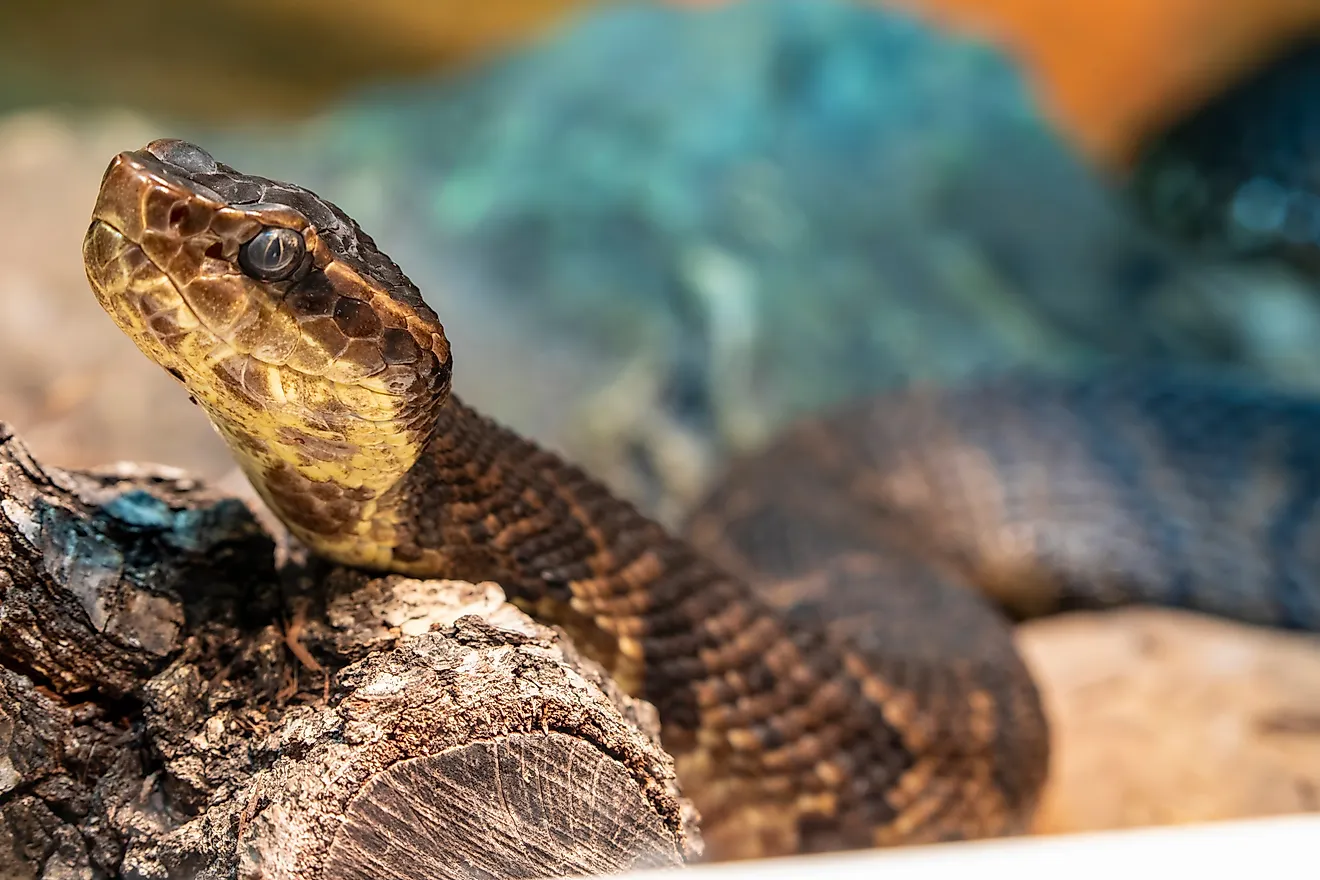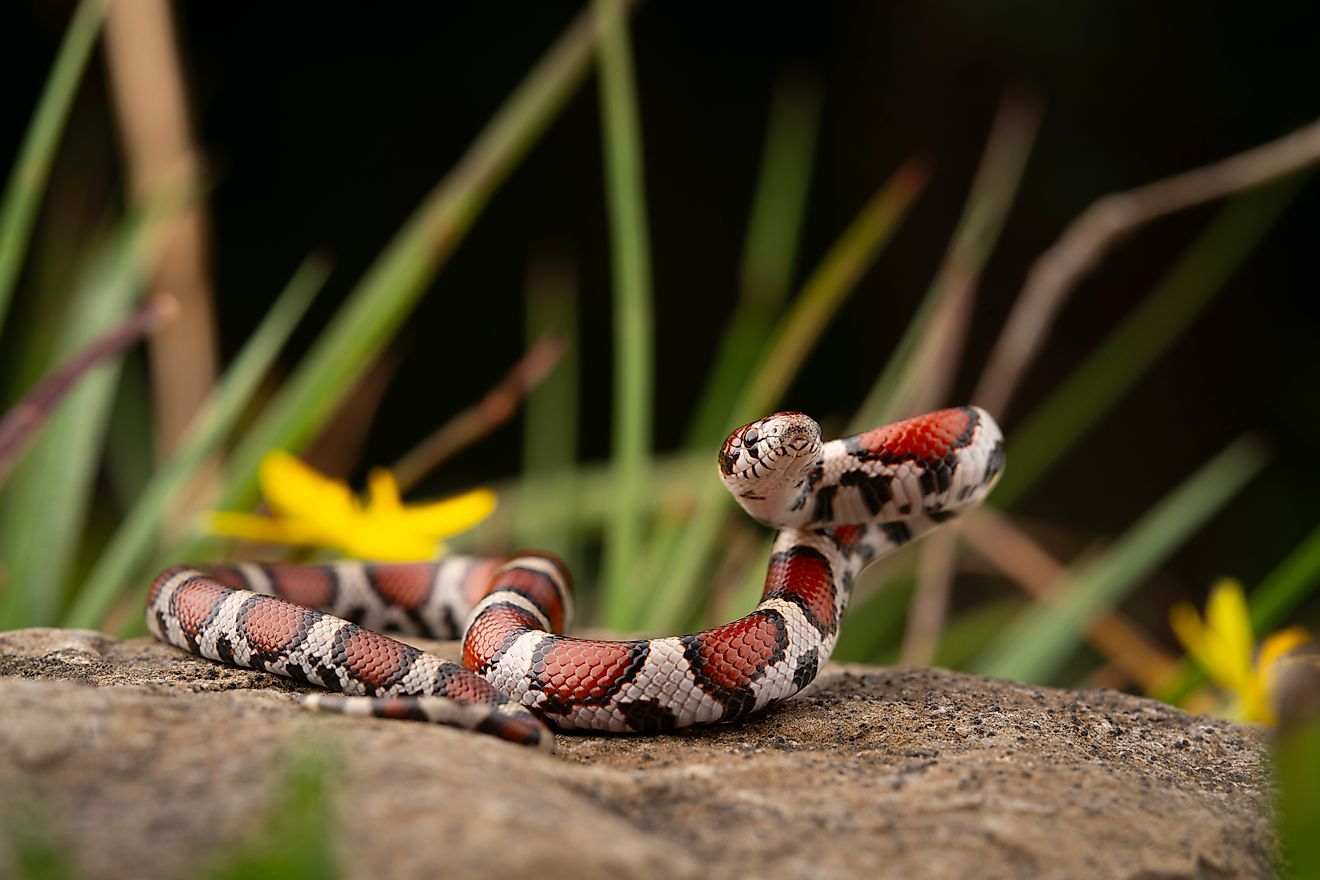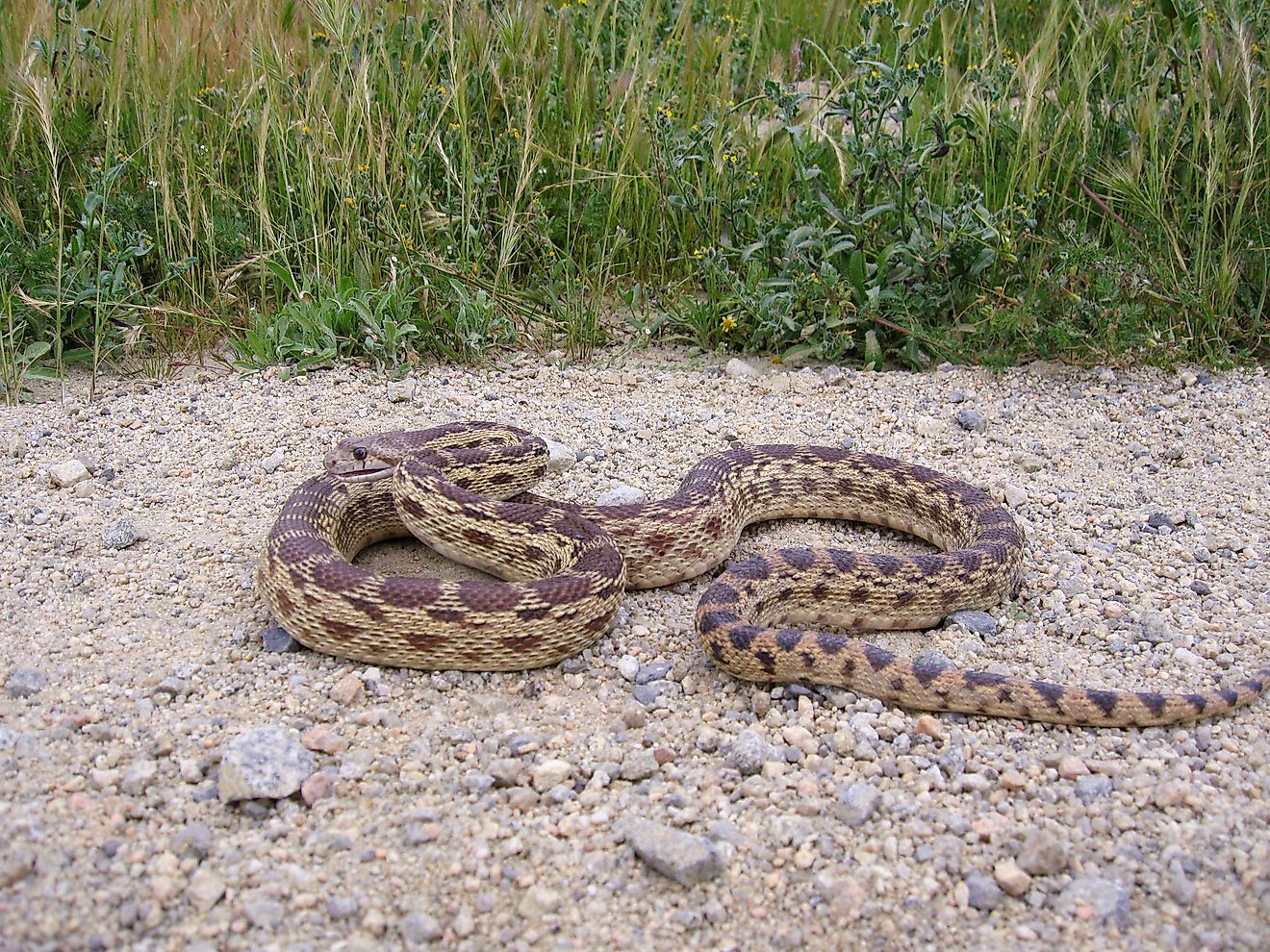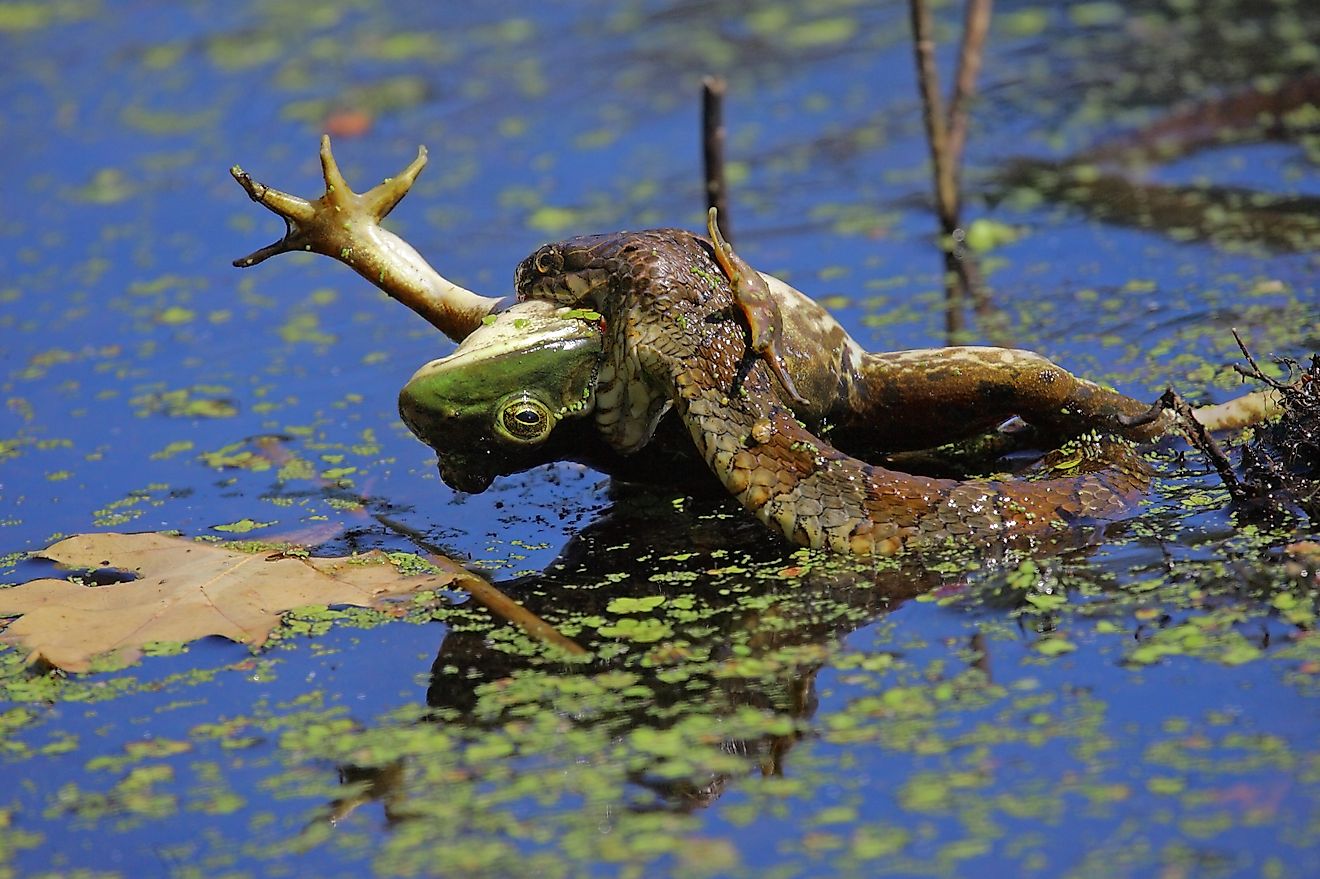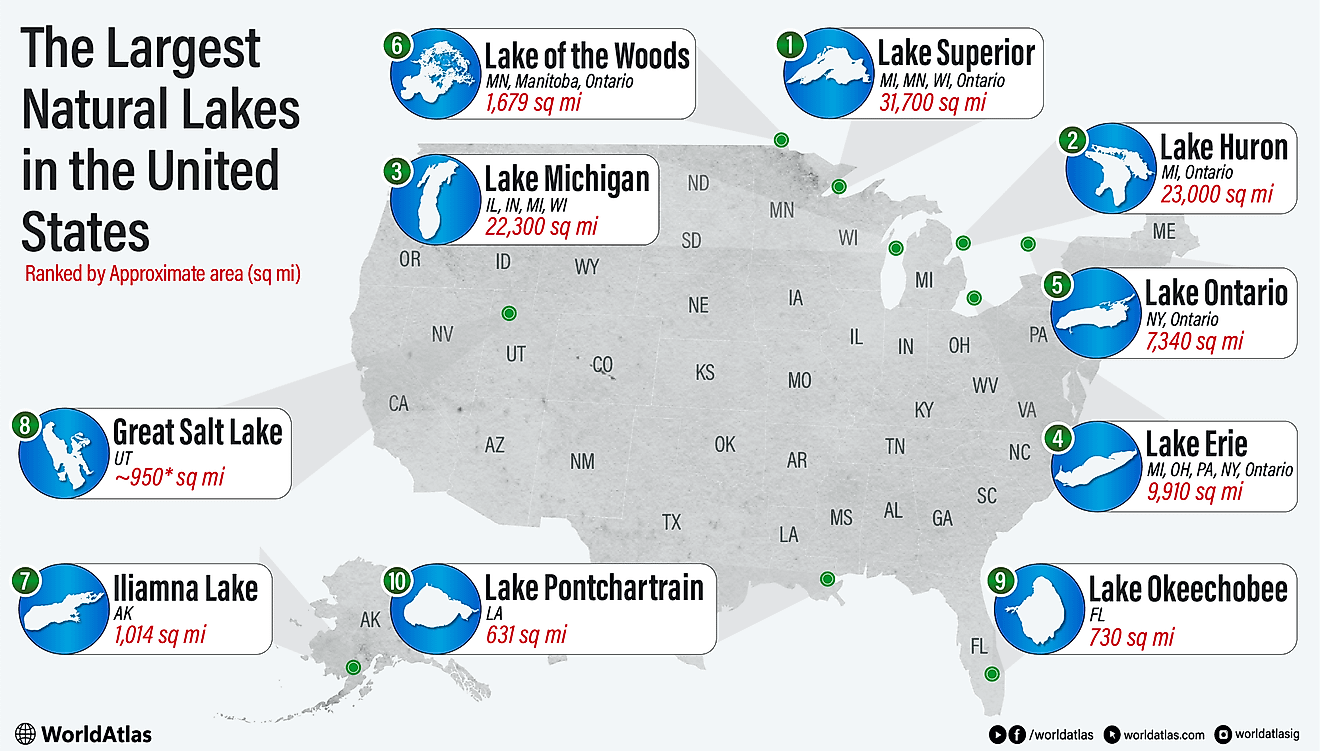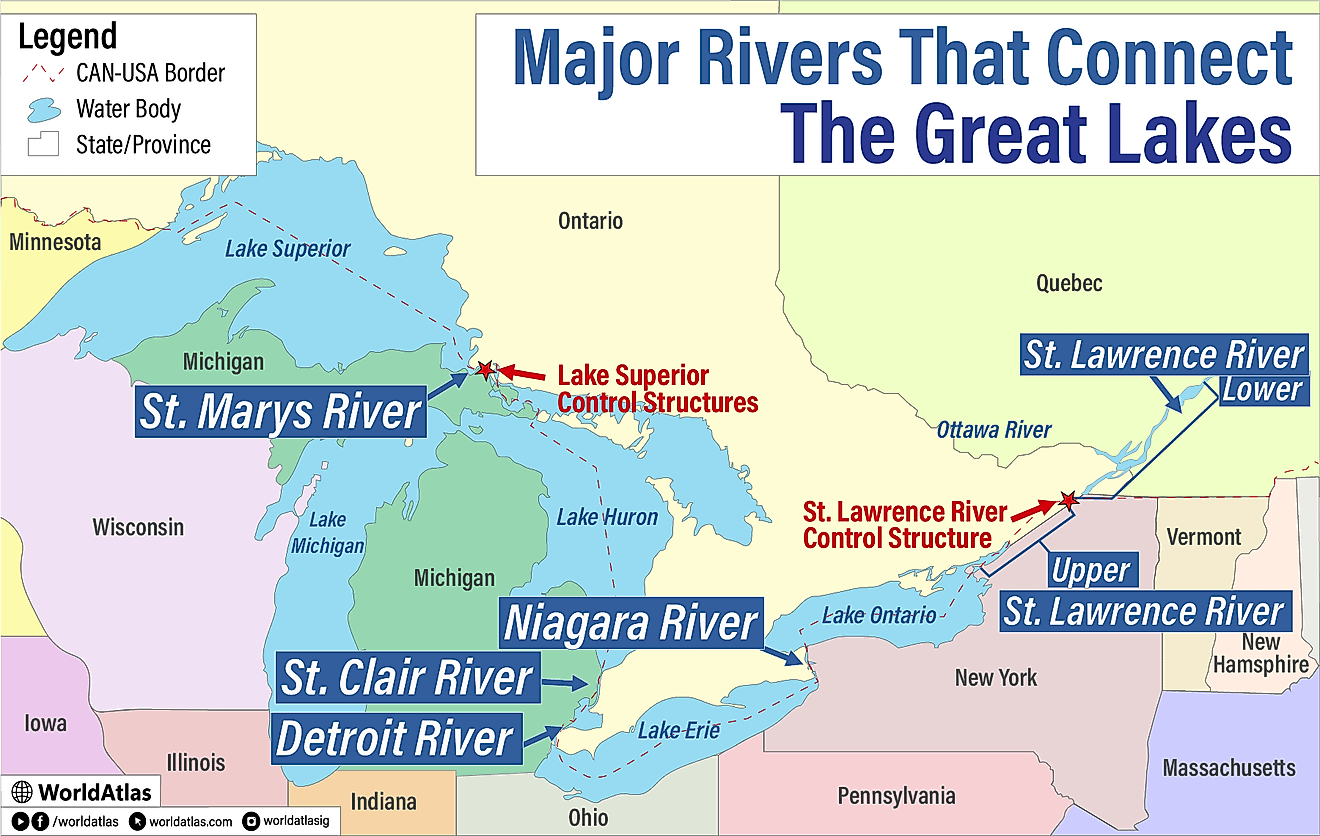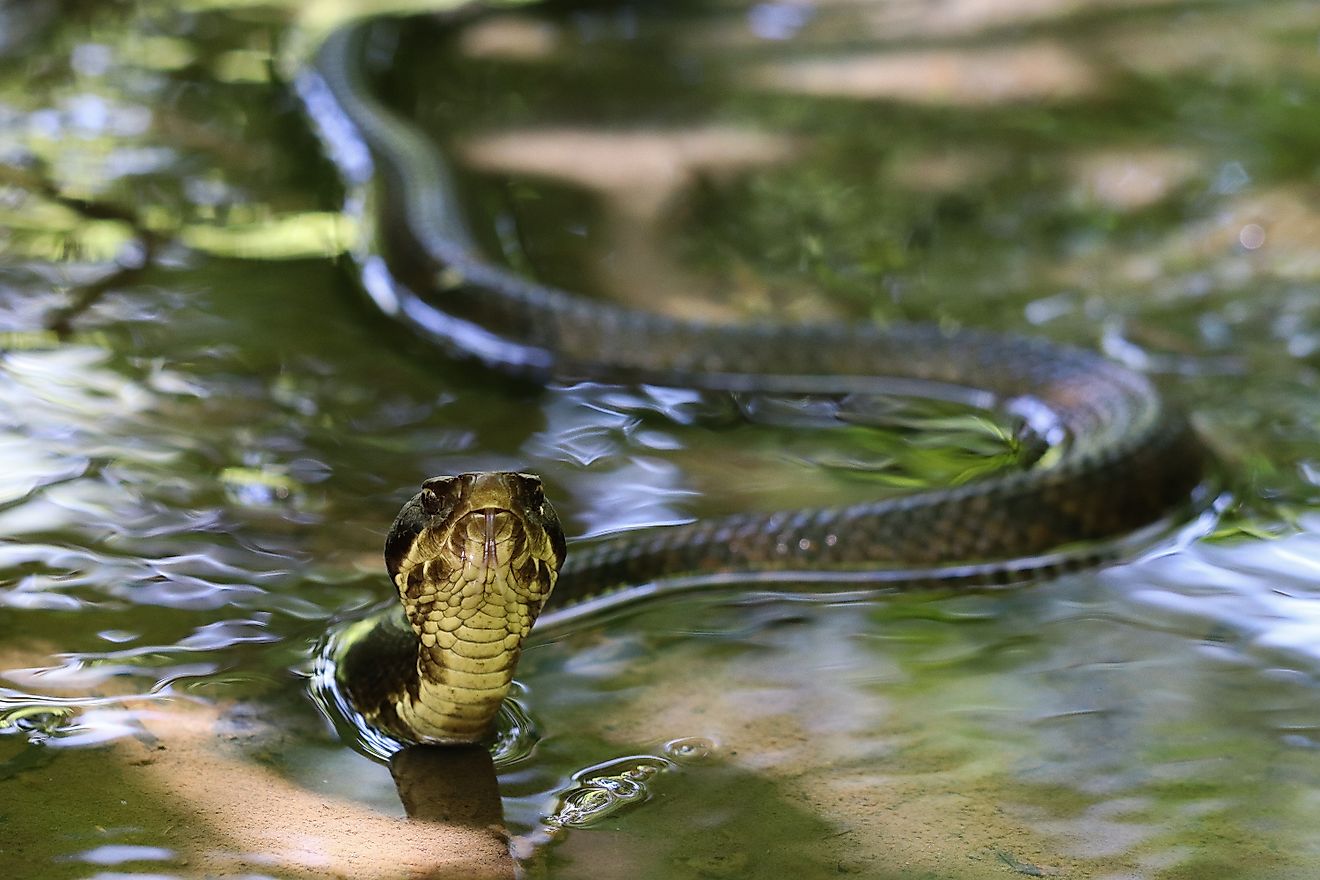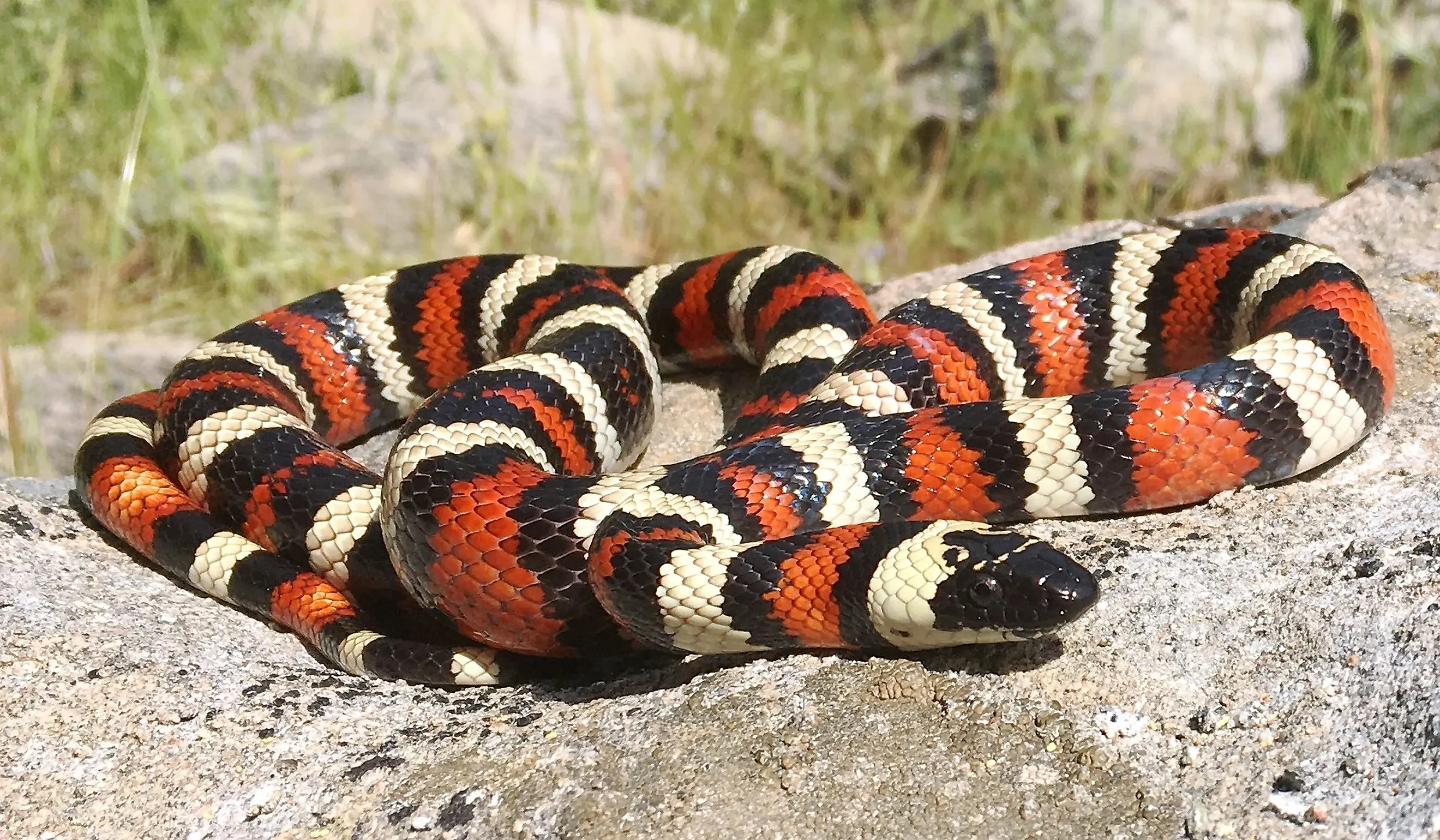
The 6 Most Snake-Filled Bodies Of Water In Oregon
Oregon has a diverse range of natural bodies of water, including lakes, rivers, streams, and wetlands, where snakes may be present. While Oregon’s landscapes and waterways aren’t particularly known for being overrun with snakes, 15 species of snakes make their home in the Beaver State. Of these, only one species is venomous: the western rattlesnake (Crotalus oreganus). Western rattlesnakes are sometimes seen near rivers, creeks, and lake edges, but generally prefer drier habitats. Crotalus oreganus is a sensitive species in Oregon, due to habitat loss.
Outdoor enthusiasts who love the water may encounter two species of semi-aquatic snakes when exploring the bodies of water, meadows, marshes, or riverbanks in this Pacific Northwest state: the Pacific coast aquatic garter snake (Thamnophis atratus) and the western terrestrial garter snake (Thamnophis elegans). While the term “snake-filled” may be a bit of an overstatement in the state, here are the top six most snake-filled bodies of water in Oregon where snakes may be spotted.
Columbia River
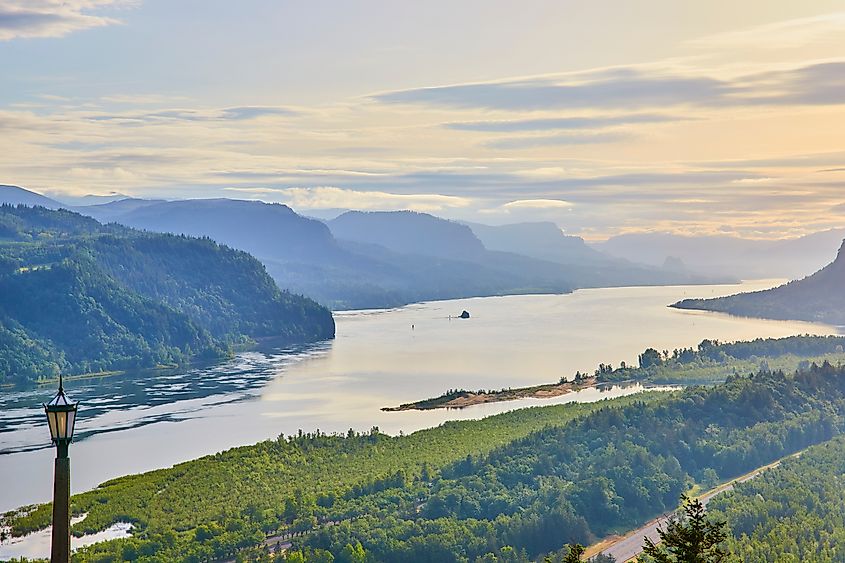
The stunning 1,243-mile-long Columbia River originates in British Columbia and flows through Washington and Oregon before emptying into the Pacific Ocean near Astoria, Oregon. It is the largest river in the Pacific Northwest, and its numerous tributaries provide an ideal habitat for snakes, such as California mountain kingsnakes and rubber boas, which are often spotted along the riverbanks and in nearby wetlands. The types of snakes visitors may encounter in the water are Pacific coast aquatic garter snakes.
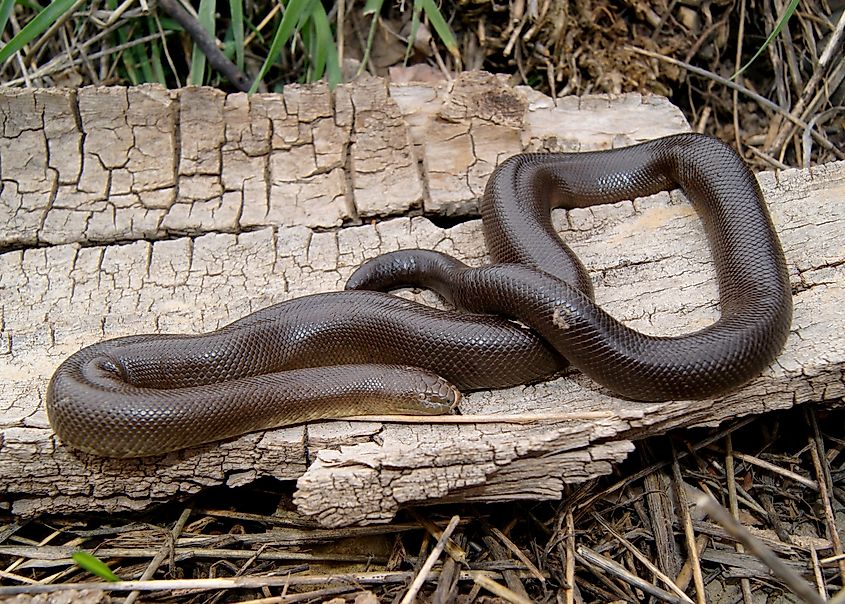
Outdoor adventure is the biggest draw for hikers, paddlers, and sightseers to the designated Columbia River Gorge National Scenic Area, one of the most spectacular stretches of the river. There are several shoreline access points to the Columbia River, including Rooster Rock State Park, one of only two clothing-optional officially designated beaches in Oregon. It is a popular day park for windsurfers, thanks to the 25 to 40 mph winds rushing through the gorge. Paddlers and anglers can explore the park’s lagoon, fishing for bass, walleye, and steelhead trout near the tall basalt rock from which the park gets its name.
Silver Creek
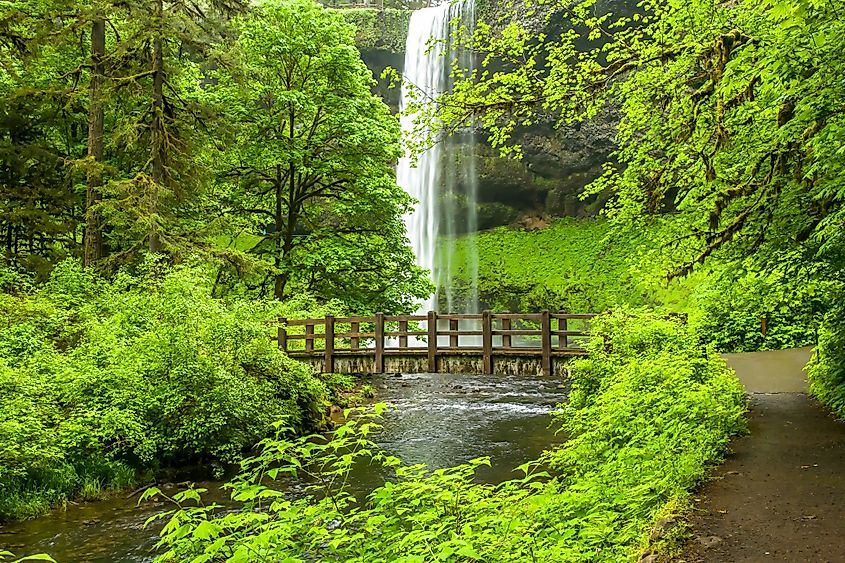
The 16-mile Silver Creek originates in Silver Creek Falls State Park in the foothills of the Cascade Mountains. Considered the crown jewel of the Oregon State Park system, waterfall chasers can walk behind a 177-foot curtain of water known as South Falls. The park is renowned for its Trail of Ten Falls, a 7.2-mile loop that passes a series of stunning waterfalls through a lush forest, several of which hikers can stand behind.
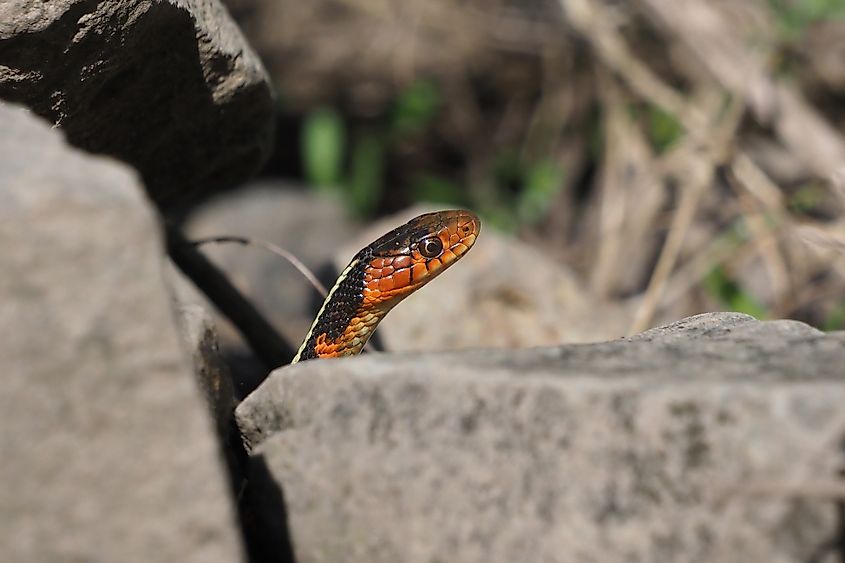
After a tour of the waterfalls, hikers in Silver Falls State Park can cool off in a designated swimming spot in the South Falls day use area. The streams and pools around the park are home to a healthy population of garter snakes, including the pretty semi-aquatic red-spotted garter snake (Thamnophis sirtalis concinnus). Semi-aquatic snakes spend most of their time on land, but can also frequently be found living near or in water. These serpents tend to be non-aggressive and typically pose little threat to humans unless provoked.
Willamette River
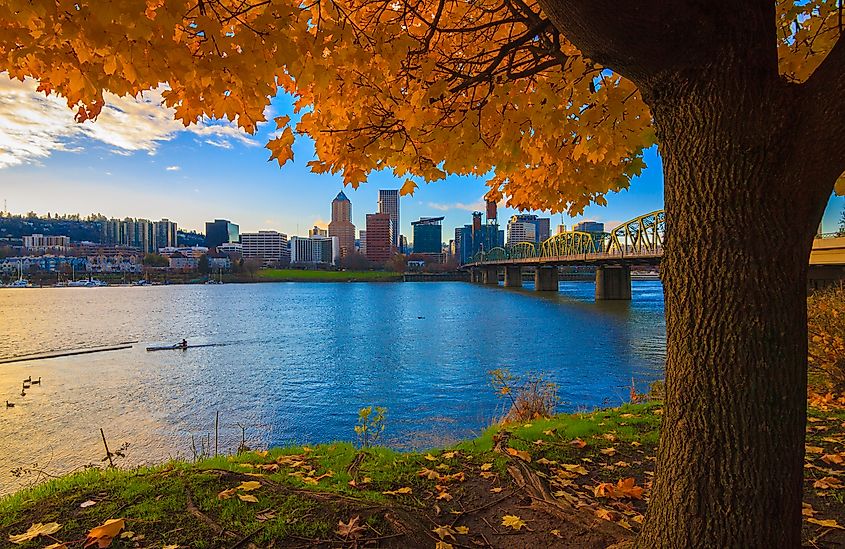
A tributary of the Columbia River, the nearly 200-mile-long Willamette River flows through the heart of Oregon, featuring many marshy areas and riparian zones that are ideal habitats for snakes, including the common garter snake, the western terrestrial garter snake, the common kingsnake, gopher snakes, and several others. Visitors exploring the river need not worry about encountering a snake on their travels, as all of these snake species are non-venomous. However, the gopher snake (Pituophis catenifer) is often mistaken for a western rattlesnake due to its tan background color with dark blotches.
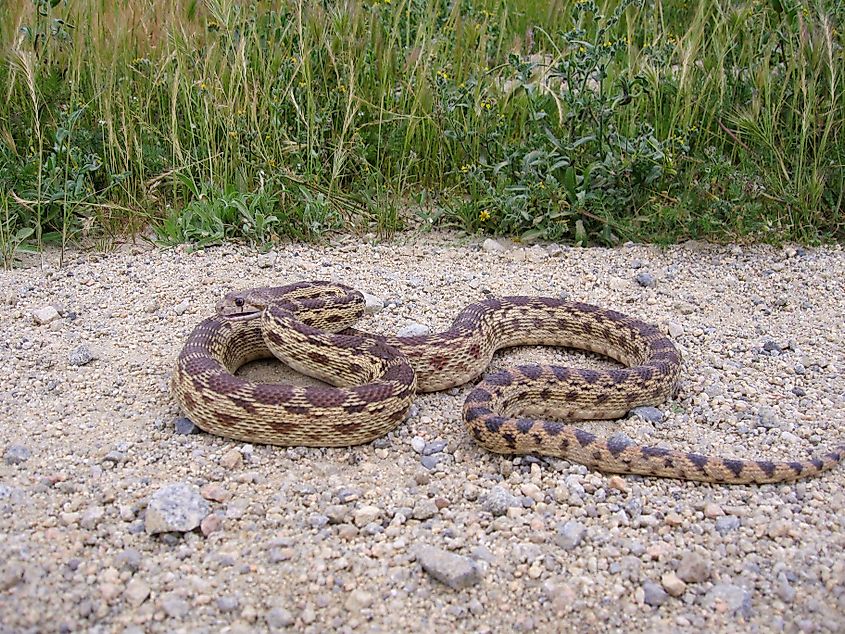
Boating enthusiasts can discover the Willamette River and its slithering snake population with a trip on the 187-mile Willamette River Water Trail, a nationally recognized water trail to protect and restore America’s rivers, shorelines, and waterways, and increase access to outdoor recreation. Download a Willamette River Recreation Guide and plan to explore a section of the water trail.
Rogue River

The 215-mile Rogue River starts at Crater Lake, one of the most snake-infested lakes in Oregon, and ends at the Pacific Ocean. Its clear, deep blue water and diverse habitats attract a variety of prey, making it a prime location for common gopher snakes, western terrestrial garter snakes, and the Pacific coast aquatic garter snake. The semi-aquatic garter snake is brown or gray, with yellow stripes, and can grow to a length of 1.5 to 4 feet. Excellent swimmers, if startled, the snakes will often dive deep into the river.
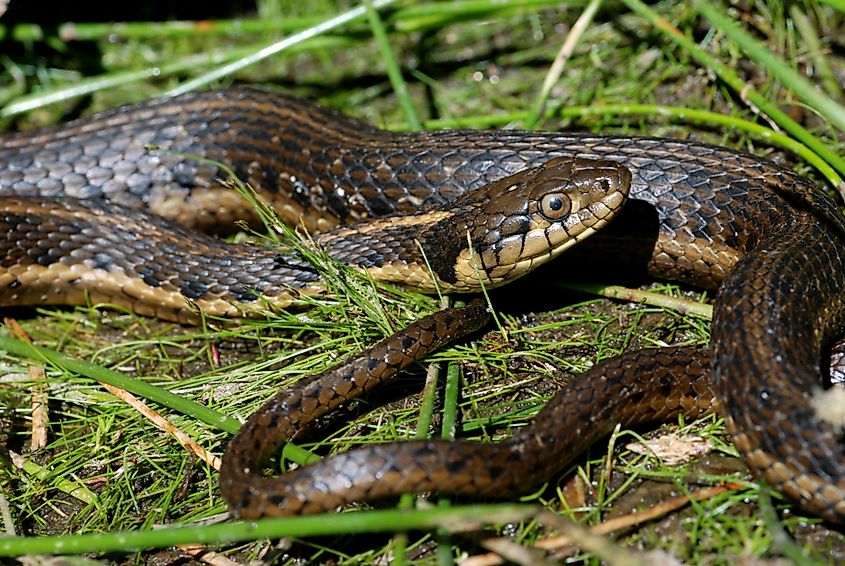
The Rogue River was one of the first eight rivers to receive the designation of Wild and Scenic in 1968, giving it special environmental protections. A top destination for kayakers and rafters, the Upper Rogue section of the river has stretches of class one through five rapids for white water rafting, and deep pools for slow-moving kayaking. Adrenaline seekers can discover the “Rogue” with an exciting jet boat tour, like the 2.5-hour Scenic Discovery Tour offered by Rogue Jet Boat Adventures. Finally, year-round sport fishing is also popular on the river, from stream banks and gravel bars, or from a boat.
Malheur National Wildlife Refuge
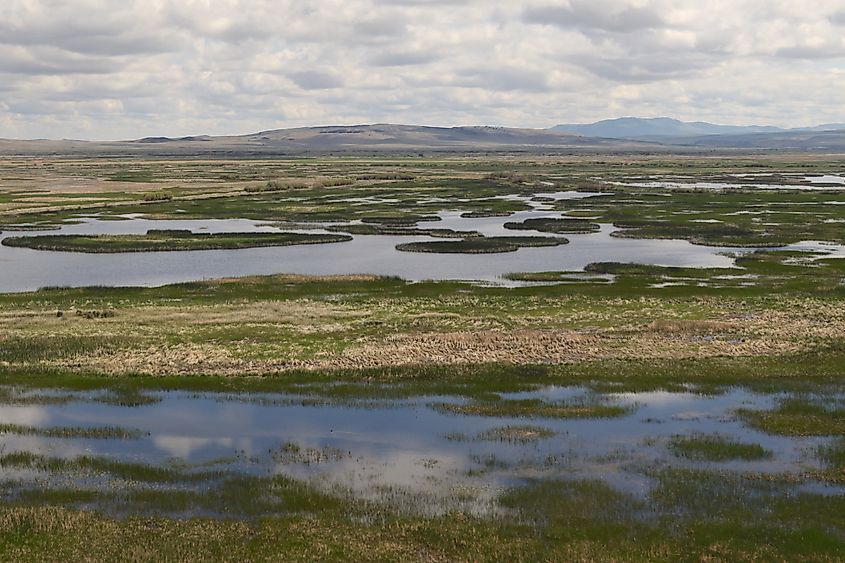
The 187,000-acre Malheur National Wildlife Refuge was established by conservationist President Theodore Roosevelt in 1908, and it is known as the Lake Malheur Reservation, specifically to protect this critical habitat. The refuge protects hundreds of species, including 340 bird species, 67 mammal species, 12 species of native fish, and a host of reptiles. Thanks to its extensive marshes, water features, and shallow Lake Malheur, several snake species make their home in the Malheur National Wildlife Refuge (NWR), including common garter snakes, gopher snakes, night snakes (Hypsiglena torquata), ground snakes (Sonora semiannulata), and western terrestrial garter snakes.
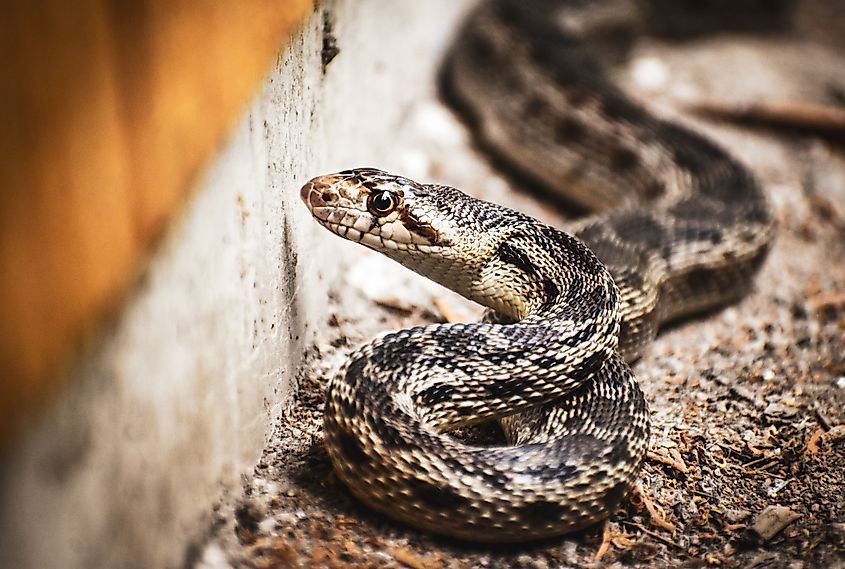
The refuge is an excellent spot for fishing, paddling, canoeing, kayaking, and paddleboarding on the 150-acre Krumbo Reservoir, a year-round destination for outdoor enthusiasts. Anglers can fish for rainbow trout, largemouth bass, and white crappie in the desert lake. At the same time, paddlers can enjoy wildlife viewing as its location on the Pacific Flyway attracts a variety of migratory birds, including the elegant sandhill crane.
Sandy River
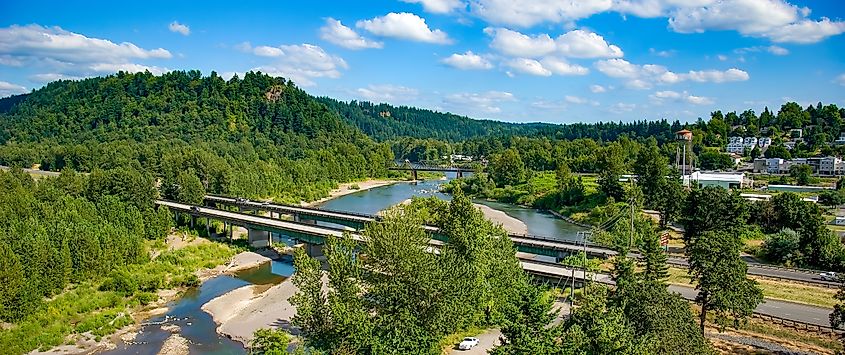
The 56-mile Sandy River is a picturesque waterway that originates on the western slopes of Mount Hood, Oregon’s tallest peak, flowing northwest until it joins the Columbia River. The Sandy River owes its name to the 1805 expedition by Lewis and Clark, who named it because of the sandy banks that line the river. The riverbanks are home to various snakes, including garter snakes and the western rattlesnake, which can be found basking in the sun near the water.
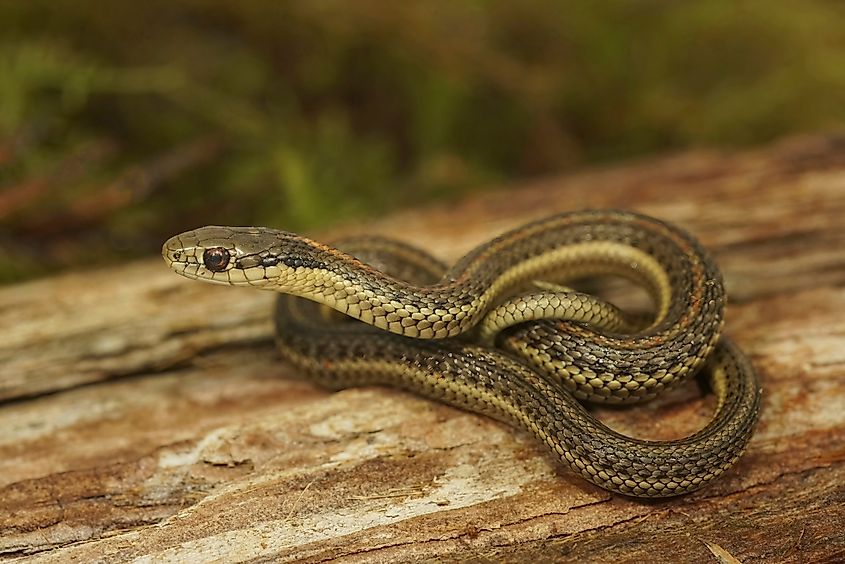
The river is a popular spot for outdoor adventurers who can fish for salmon and steelhead year-round, kayak through a mix of gentle and exciting rapids, or swim and picnic in the Sandy River Delta Park. A section of the river near Oxbow Regional Park is designated as Scenic and Wild, where boaters and swimmers can observe native species near the water, including otters, giant salamanders, painted turtles, red-legged frogs, and garter snakes.
Snakes play a vital role in Oregon’s ecosystems, contributing to pest control and enhancing biodiversity. For outdoor enthusiasts exploring the spectacular Beaver State, encountering a snake on riverbanks, near streams, or even while swimming in a body of water can be a fascinating part of the experience. Most snake species in Oregon are non-venomous and pose little risk to humans, as long as they are given space and treated with respect. The presence of snakes should encourage nature lovers to appreciate the vibrant health of the state’s natural environments as they discover the charm of the six most snake-filled bodies of water in Oregon.
